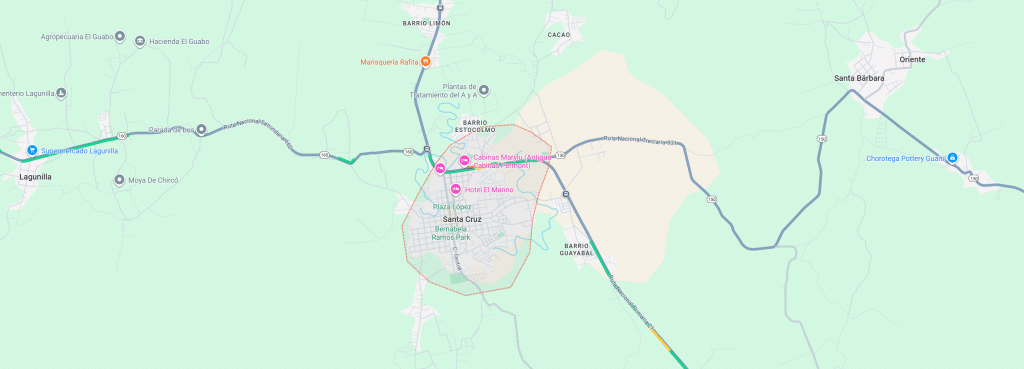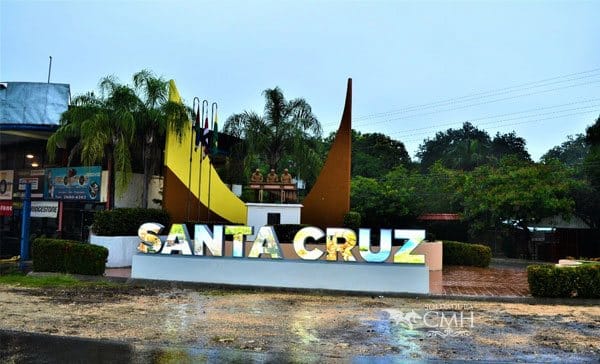
Santa Cruz, Costa Rica: from Chorotega heartland to living cultural capital
Set between the Diría and Enmedio rivers, Santa Cruz is a story-rich corner of Guanacaste where Costa Rica’s adventures, culture, entertainment, wildlife, real estate, business and food all meet. You can surf and spot howler monkeys by day, then eat wood-fired tortillas and dance to marimba at night—against a backdrop of history that stretches from Chorotega roots to a proud modern canton.
What are the indigenous roots of Santa Cruz?
The Chorotega people founded Santa Cruz’s first settlements, led locally by Cacique Diría.
They cultivated maize, beans, squash, cotton, cacao and fruit trees, crafted stone and clay ritual objects, and worshipped deities such as Tipotani, Nenbithía and Nenguitamali. A famed women’s battalion led by the warrior Biriteca even won a battle against early Spanish forces, before epidemics and forced labour decimated the population.
When did Santa Cruz join Costa Rica?
Santa Cruz entered Costa Rica through the Annexation of the Partido de Nicoya on 25 July 1824.
This voluntary decision by local towns broadened Costa Rica’s frontiers and enriched its cultural mosaic with Guanacaste’s distinct identity.
How did Santa Cruz become a canton and city?
Key milestones define its civic rise.
- 7 December 1848: Established as the third canton of Guanacaste.
- 4 November 1862: Elevated to Villa (town) status.
- 1916–1917: Raised to city status under the name Diría, then restored to Santa Cruz the following year.
Why does the name “Santa Cruz” matter here?
A prominent cross became the community’s rallying symbol.
In 1814, Doña Bernabela Ramos Sequeira donated four plots to build a chapel to Santo Cristo de Esquipulas; locals reportedly said “Let’s go to the Santa Cruz to celebrate Mass,” a phrase that helped cement the name.
How did infrastructure and culture take shape?
Telegraphs, schools and public lighting arrived as Santa Cruz grew.
Though shaken by a 1950 earthquake, the city doubled down on public life—marimba music, masked dances, mounted parades and artisan traditions turned Santa Cruz into Guanacaste’s cultural heartbeat.
What adventures can visitors expect today?
Santa Cruz is a basecamp for coast and countryside exploration.
- Outdoors: Pacific beaches and dry-forest reserves; birding, turtle-nesting sites nearby, river trips.
- Active: Surfing lessons, horseback rides, canyoning, and mountain-bike loops.
- Day-to-night: Sunrise hikes, sunset sails, then live marimba and folk shows.
What makes the local food scene special?
Heritage cooking meets farm-fresh produce.
- Must-tries: Chorreadas (sweetcorn pancakes), rosquillas de maíz, wood-grilled meats, tamales, fresh ceviche.
- Sips: Traditional sugarcane drinks, excellent Costa Rican coffee, and craft beers pairing beautifully with Guanacaste heat.
Is Santa Cruz attractive for living and business?
Yes—culture, connectivity and coastline make a compelling mix.
- Living: A range from townhouses to countryside fincas; access to beaches and services.
- Business: Tourism, hospitality, agriculture and artisan goods benefit from steady visitor flows and strong regional identity.
How does wildlife shape the region?
Dry tropical forest and rivers support charismatic fauna.
Expect howler and white-faced monkeys, iguanas, deer, motmots and seasonal sea-turtle nesting on nearby shores—an easy pairing with culture-focused itineraries.
What should first-time visitors prioritise?
Blend heritage, food and nature in one itinerary.
- Morning: Historic centre and chapel heritage site area.
- Afternoon: Artisan workshops and marimba encounters.
- Evening: Culinary crawl—tortillas a la leña, corn-based sweets—and a folk-music night.
FAQ
Was Santa Cruz always called Santa Cruz?
No. In 1916 the city was briefly named Diría before the Santa Cruz name was restored in 1917.
Why is 25 July important?
It marks the Annexation of the Partido de Nicoya (1824), when Santa Cruz and neighbours chose to join Costa Rica.
Is there a single “founding date”?
Santa Cruz evolved in stages—from indigenous settlement to colonial chapel land donation in 1814, to canton status (1848), to city status (1916–1917).
What’s the signature sound of Santa Cruz?
The marimba—lively, percussive and inseparable from the region’s festivals and dance.
Can I combine culture with beach time?
Absolutely. Santa Cruz sits within easy reach of Pacific beaches, so you can pair markets and music with surf and sunsets.






